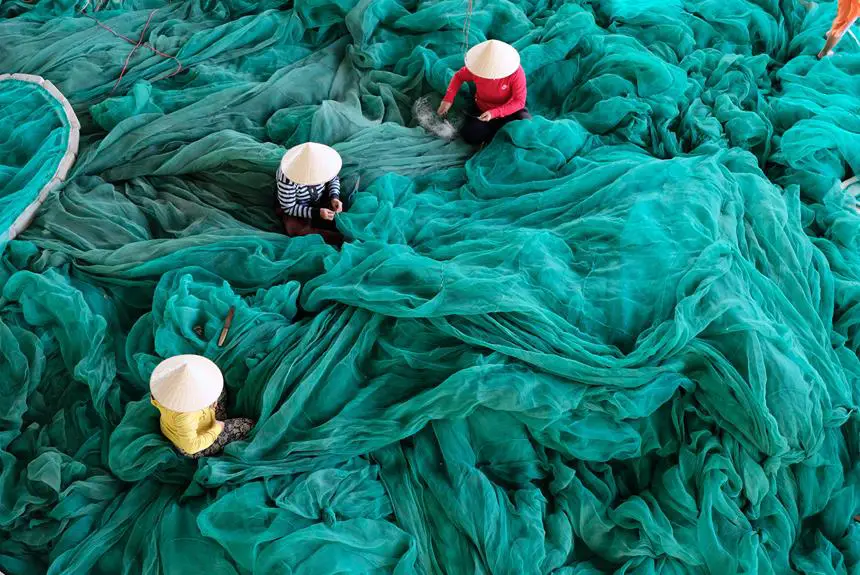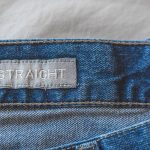Hey there! Ever wondered if fabric cut on the bias is better for sewing? This is a common question among experienced sewers looking to elevate their craft. Understanding the advantages and techniques of working with bias-cut fabric can take your sewing projects to the next level.
In this guide, we'll explore the benefits of using bias-cut fabric, the sewing techniques that work best, and how to choose the right projects for this unique material. Whether you're a seasoned seamstress or a budding sewing enthusiast, mastering the art of sewing with bias-cut fabric can add a professional touch to your creations.
Let's dive in and unravel the secrets of working with bias-cut fabric!
Key Takeaways
- Fabric cut on the bias has more stretch and drape
- Bias-cut fabric molds to the body, enhancing the silhouette
- Bias-cut fabric offers enhanced drape and better fit
- Bias-cut fabric allows for striking visual effects and innovative garment constructions
Understanding Bias-Cut Fabric
When sewing, it's important to understand why fabric cut on the bias behaves differently than fabric cut on the straight grain. Fabric cut on the bias offers several benefits.
It has more stretch and drape, allowing for a better fit and a more fluid look in garments. The bias cut also creates a visually interesting diagonal pattern when used in design.
However, working with bias-cut fabric presents certain challenges. It's more prone to distortion and stretching during handling and stitching, requiring careful handling and stabilization. Additionally, the diagonal stretch can make it more challenging to match patterns and maintain straight edges.
Understanding these benefits and challenges is crucial for mastering the art of sewing with bias-cut fabric. By recognizing and addressing the unique characteristics of bias-cut fabric, you can leverage its advantages while mitigating potential pitfalls, resulting in well-fitted, elegant garments with beautifully draped silhouettes.
Advantages of Bias-Cut Fabric
When you cut fabric on the bias, you create a drape and fit that's unparalleled. The bias-cut fabric molds to the body, enhancing the overall silhouette and providing a flattering look.
Additionally, the unique diagonal grain of bias-cut fabric opens up a world of design possibilities, allowing for intricate patterns and visual interest in your sewing projects.
Improved Drape and Fit
For a more flattering and fluid fit, sewing with bias-cut fabric allows you to create garments that drape beautifully and conform to your body's curves. The improved silhouette and fabric movement achieved through bias-cut fabric provide several advantages:
- Enhanced drape: Bias-cut fabric hangs more gracefully, creating a softer and more elegant look.
- Better fit: The natural stretch of bias-cut fabric allows garments to mold to your body, resulting in a more customized fit.
- Flattering lines: The diagonal grain of bias-cut fabric creates visually appealing lines that complement the body's natural shape.
- Comfortable movement: Clothing made from bias-cut fabric offers increased flexibility and comfort, allowing for ease of movement without sacrificing style.
These characteristics make bias-cut fabric an excellent choice for achieving garments with superior drape and fit.
Unique Design Possibilities
To explore the unique design possibilities of bias-cut fabric, consider its potential to create striking visual effects and innovative garment constructions. When fabric is cut on the bias, it allows for a range of creative possibilities that are not achievable with fabric cut on the straight grain. The bias-cut fabric drapes and flows gracefully, making it ideal for creating fluid and figure-flattering designs. Additionally, the diagonal orientation of the fabric presents design challenges that, when mastered, can result in stunning and unique garments. Take a look at the table below to understand the creative possibilities offered by bias-cut fabric:
| Creative Possibilities of Bias-Cut Fabric |
|---|
| Enhanced drape and flow |
| Unique visual effects |
| Innovative garment constructions |
| Design challenges and opportunities |
The bias-cut technique opens up a world of design opportunities, allowing you to create garments with a distinctive and elegant aesthetic.
Sewing Techniques for Bias-Cut Fabric
To achieve successful sewing results with bias-cut fabric, it's essential to use proper techniques and tools. Sewing on the bias presents unique challenges due to the fabric's stretch and drape. Mastering the following techniques will ensure your sewing projects with bias-cut fabric are a success:
- Staystitching: Prevent stretching and distortion by staystitching the edges of bias-cut pieces immediately after cutting them.
- Handling with Care: When manipulating bias-cut fabric, handle it gently to avoid stretching. Use sharp pins and minimal handling to prevent distortion.
- Supportive Seams: Opt for flat-felled or French seams to provide additional support and prevent excessive fraying on bias-cut garments.
- Pressing Techniques: Utilize a tailor's ham to press seams and darts. Avoid pressing too firmly to prevent stretching the bias-cut fabric.
Incorporating these techniques into your sewing routine will help you master the art of sewing with bias-cut fabric, allowing you to create garments with beautiful drape and a flattering fit.
Choosing the Right Projects for Bias-Cut Fabric
Selecting suitable projects for bias-cut fabric involves considering the garment's intended drape and movement, ensuring that the fabric's unique characteristics enhance the design. When choosing a pattern for bias-cut fabric, opt for designs that capitalize on the fabric's fluidity and drape, such as slip dresses, flared skirts, or cowl necklines. These styles allow the fabric to fall gracefully around the body, showcasing the bias's natural stretch and movement. Additionally, consider patterns with simple, clean lines to highlight the fabric's diagonal structure and minimize disruptions to the bias grain.
Fabric preparation is crucial when working with bias-cut fabric. Before laying out the pattern, ensure that the fabric is cut perfectly on the bias to achieve the desired stretch and drape. Take extra care to handle the fabric gently to prevent stretching or distorting the bias grain. Moreover, it's essential to let the fabric hang or rest after cutting to allow any potential stretching to occur before hemming the garment.
Tips for Working With Bias-Cut Fabric
When working with bias-cut fabric, it's important to consider the garment drape and the way the fabric will fall on the body.
The bias also provides the fabric with more stretch, which can impact the fit and comfort of the garment.
Cutting and handling bias-cut fabric requires special attention to ensure that the fabric maintains its shape and doesn't stretch out of proportion during the sewing process.
Bias for Garment Drape
Achieving a beautiful drape in your garments requires a thorough understanding of how to work with bias-cut fabric. When working with bias-cut fabric for garment drape, keep these tips in mind:
- Directional Drape: Understand that bias-cut fabric drapes differently than straight-cut fabric due to its diagonal grain, which allows for a more fluid and flattering drape.
- Seam Finishes: Consider using French seams or Hong Kong finishes to maintain the drape and prevent fraying, as bias-cut edges are more prone to fraying.
- Pattern Placement: Pay attention to pattern placement on bias-cut fabric to ensure a harmonious flow of the design on the final garment.
- Handling Techniques: When cutting and sewing bias-cut fabric, handle it gently to prevent excessive stretching, distortion, or loss of the fabric's drape.
Bias for Stretch
For better results when sewing with bias-cut fabric, focus on understanding how to maximize its stretch.
When working with stretchy fabric cut on the bias, it's essential to be mindful of the direction of stretch. Aligning the pattern pieces parallel to the greatest degree of stretch will ensure the best fit and comfort in the finished garment.
When laying out pattern pieces, pay close attention to pattern matching to achieve a cohesive look.
Additionally, the extra stretch provided by bias-cut fabric can be advantageous for creating garments with a more form-fitting silhouette. It's important to handle the fabric gently to prevent distortion, and consider using stabilizing techniques for areas that require structure.
Mastering these tips will help you make the most of the unique properties of bias-cut fabric when sewing with stretchy materials.
Cutting and Handling Bias
To effectively handle bias-cut fabric, you should gently manipulate the material and regularly check for distortion during the sewing process. Working with bias-cut fabric requires special care and attention to ensure the best results. Here are some tips for cutting and handling bias-cut fabric:
- Cutting: When cutting bias-cut fabric, use a sharp pair of scissors to ensure clean, precise edges.
- Handling: Handle the fabric gently to avoid stretching or distorting it.
- Pinning: Use extra pins when working with bias-cut fabric to secure the edges and prevent shifting during sewing.
- Pressing: Be cautious when pressing bias-cut seams to avoid stretching the fabric out of shape.
Mastering the art of bias cutting and fabric manipulation will enhance your sewing skills and result in beautifully finished garments.
Common Mistakes to Avoid With Bias-Cut Fabric
Avoiding stretching the bias-cut fabric while sewing is crucial for achieving accurate and professional results. When working with bias-cut fabric, it's important to be aware of common pitfalls and sewing challenges to ensure your project turns out as intended. Here are some mistakes to avoid when working with bias-cut fabric:
| Common Mistake | Explanation | Solution |
|---|---|---|
| Pulling or tugging fabric | Bias-cut fabric is more prone to stretching, so avoid pulling or tugging it while sewing to maintain its shape. | Use extra pins or baste the seams to prevent stretching. |
| Not allowing for extra fabric | Due to the nature of bias-cut fabric, it may require additional fabric to compensate for potential stretching. | Cut the fabric with a generous seam allowance to accommodate stretching. |
| Ignoring directional layout | Neglecting to pay attention to the fabric's directional layout can result in a distorted or uneven finished product. | Always lay out and cut bias fabric in the same direction to ensure consistency. |
Being mindful of these common mistakes will help you achieve better results when working with bias-cut fabric.
Frequently Asked Questions
Can You Use Bias-Cut Fabric for All Types of Garments, or Are There Certain Styles That Work Best With This Type of Fabric?
For best styles and garments, using bias-cut fabric offers versatility and draping. Consider prints and seam finishes for different styles. Keep in mind that bias-cut garments may require more fabric and careful handling during construction.
What Types of Patterns or Prints Work Well With Bias-Cut Fabric, and Are There Any to Avoid?
When working with bias-cut fabric, consider the types of prints. Geometric prints can complement the diagonal lines, while floral prints may distort. When using delicate or slippery fabrics, be cautious of bias stretch and handle with care.
Are There Any Specific Considerations to Keep in Mind When Working With Delicate or Slippery Fabrics on the Bias?
When working with delicate or slippery fabrics on the bias, it's essential to use precise sewing techniques. Handling silk, satin, chiffon, or organza requires careful fabric management to maintain the fabric's drape and integrity during the sewing process.
How Does the Drape and Movement of Bias-Cut Fabric Differ From Straight-Grain Fabric, and How Does This Affect the Finished Garment?
When sewing bias-cut fabric, consider the drape effect and adjust your sewing techniques accordingly. The fabric's natural stretch and fluidity create unique movement, enhancing the garment's flow. Mastering these intricacies elevates your sewing skills.
Are There Any Special Pressing or Finishing Techniques Required for Bias-Cut Seams and Hems to Maintain the Fabric's Stretch and Drape?
To maintain stretch and drape in delicate or slippery fabrics, special pressing and finishing techniques are crucial for bias-cut seams and hems. These methods help retain the fabric's natural flow and prevent distortion during sewing.
- Can You Get Organza Wet? - April 23, 2024
- Why Is Organza so Popular? - April 23, 2024
- What Do You Wear With Organza? - April 23, 2024






